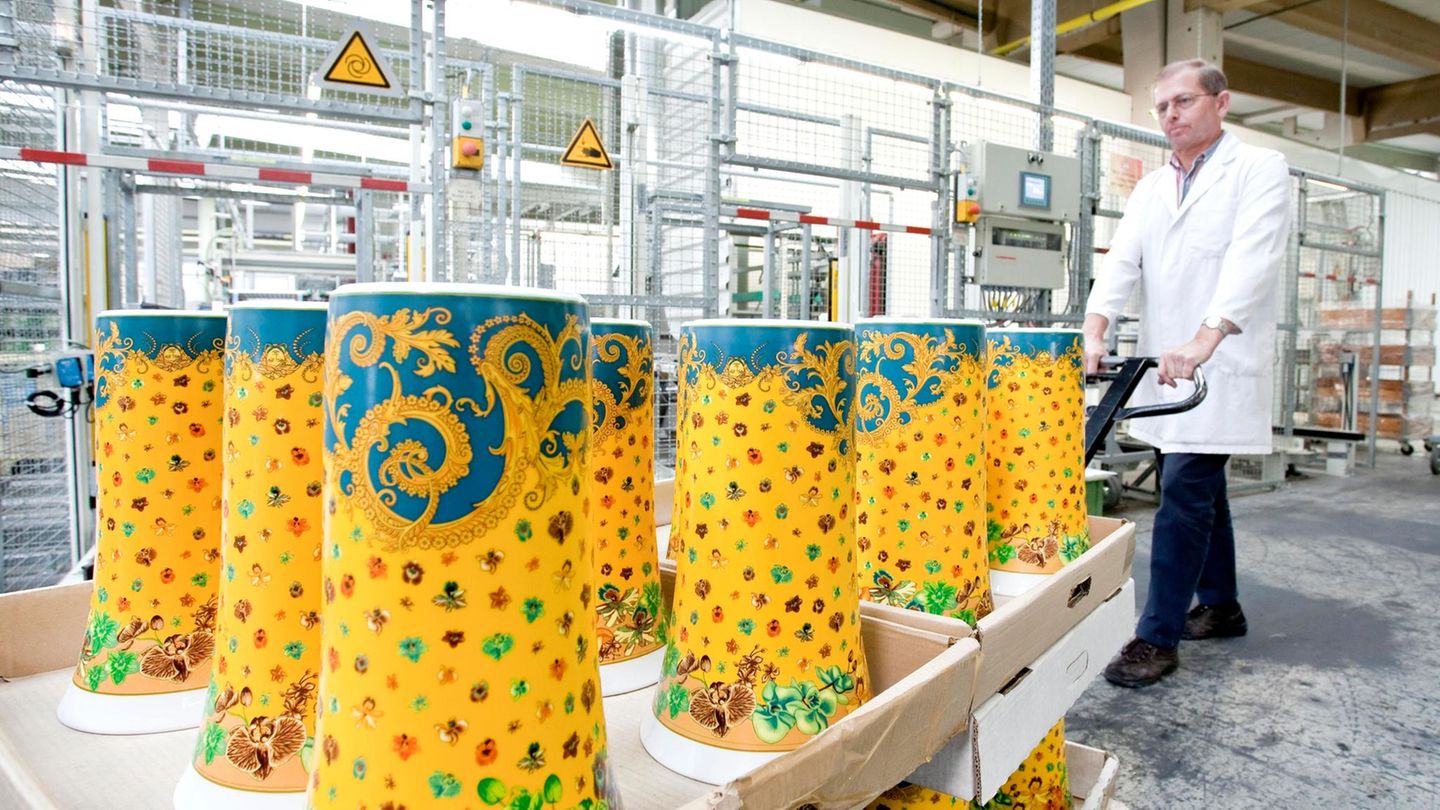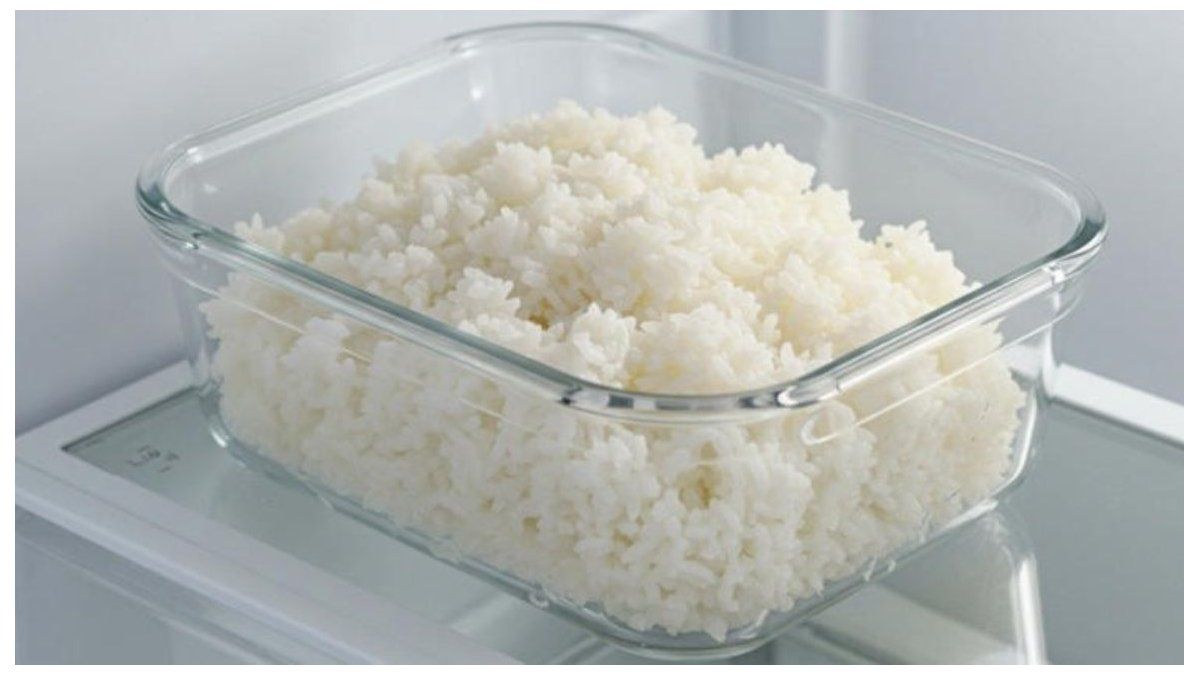Traditional brand
Why the luxury porcelain company Rosenthal slipped into crisis
Copy the current link
Rosenthal is the epitome of German table culture. Luxury collaborations with Versace and Swarovski should secure the future. Now the porcelain company is fighting for survival.
A festively set table, accompanied by fine porcelain from Rosenthal: For 145 years, the Upper Franconian manufacturer’s tableware has been an epitome of German table culture and one of the best-known brands in luxury porcelain. But for several months now, the traditional company has been in crisis despite modernization efforts.
In order to secure the forest stock, the management now wants to implement tough austerity measures: a factory closure and extensive job cuts are under discussion. The aim is to downsize “to just one production facility that will produce on a smaller scale,” a company spokeswoman said on Monday.
These well-known companies have filed for bankruptcy
esprit
The fashion group Esprit is finally closing its branches in Germany. This is the sad result of the insolvency proceedings, as the DPA news agency reports. In May, the company filed for bankruptcy for its European operations. At that time it was said that there were discussions with an investor, but the branches would only remain open “until further notice”. Almost three months later it is clear: all remaining 56 branches will finally close by the end of the year. This cost around 1,300 employees their jobs. Things didn’t look good for the branches right from the start, after all, it was the second insolvency proceedings in Germany in just four years. In 2020, the group had already closed 50 branches – and laid off a third of the workforce. However, Esprit fashion will continue to exist, according to the plan of the new owner, the British financial investor Alteri. Esprit is active in around 40 countries worldwide and has its headquarters in Ratingen and Hong Kong.
© Schoening / Imago Images
Back
Further
Rosenthal produces at two locations in Germany: in Selb (Wunsiedel district in the Fichtelgebirge) and Speichersdorf (Bayreuth district). Which of the two plants has to go is currently the subject of negotiations with the responsible industrial union for mining, chemicals and energy (IG BCE). The union declined to comment on the talks when contacted by Capital.
The current 600 employees are now worried about their jobs. The company confirmed that the savings would “involve job cuts.” Nevertheless, Rosenthal wants to “continue to hold on to Germany as a production location”.
But why could the luxury brand have gotten this far? Based on the latest balance sheet and Rosenthal’s statement, there are three main reasons for the current crisis.
Stagnant demand
On the one hand, Rosenthal says he is struggling with “changed consumer behavior regarding porcelain products”. In other words, tableware services – once a status symbol for the middle class – are simply no longer as popular as they were in grandma’s time.
In recent years, Rosenthal has tried to counteract the luxury market with a stronger focus: with Swarovski dinner plates for 80 euros and Versace teapots for just under 500 euros. It also focused its growth on exports to North America and the Middle East. Almost half of annual sales recently came from abroad.
The decline was halted for the time being, but major growth did not materialize. A look at the sales figures also shows this: sales have been stagnating for years at around 80 million euros per year. The efforts to develop the online business were too half-hearted and the leadership was too inconsistent: in the last four years alone, Rosenthal has experienced at least four changes in management.
Rosenthal is struggling with low-cost competition
In addition, there is increased competition from providers from the Far East, who produce there at a fraction of the labor costs and can therefore offer their tableware services much cheaper.
For Rosenthal, this leads to an existential dilemma: On the one hand, producing the porcelain in-house is very expensive because shaping, firing and decorating the porcelain requires a lot of manual work. Personnel costs are therefore the largest cost item on the balance sheet – and therefore the logical starting point for savings. On the other hand, the factories in Bavaria are part of the quality promise “Made in Germany”. The traditional craftsmanship is the brand’s central selling point, especially abroad. Giving it up would also be a farewell to the core of the brand.
Rising energy costs
In the past two years, these difficult market conditions were compounded by another shock: due to war and inflation, prices for raw materials and energy suddenly shot up by 40 percent, as the most recent public annual balance sheet from 2022 shows. Energy costs are likely to continue to cause problems for Rosenthal, as porcelain production is energy-intensive. To refine it, it is fired several times in an oven at temperatures between 950 and 1400 degrees Celsius.
All of this is reminiscent of 2009: After the global financial crisis, Rosenthal was on the verge of bankruptcy, but was saved by the Milan-based Arcturus Group. It is unclear whether the Italian parent would also pay for a second attempt at restructuring.
Porcelain dying
There used to be more than seven porcelain factories at the headquarters in Selb, northern Bavaria. Today there is only one. Maybe it too could soon be history.
The traditional company is now optimistic that the austerity measures could bring about a turnaround: “Rosenthal is confident that the measures will set the course for a successful future in order to be sustainably competitive,” said a spokeswoman. After all, the creditworthiness assessor Creditreform rates the traditional company’s probability of default at just seven percent.
Capital
Capital is a partner brand of star. You can access selected content with your star+ See subscription. You can find more from Capital at www.stern.de/capital.
Source: Stern




